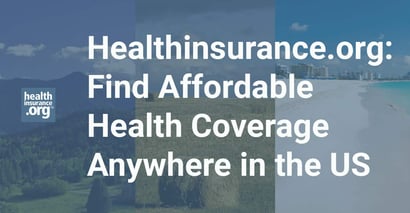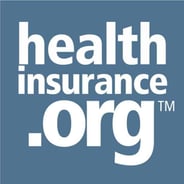
In a Nutshell: Times keep changing in the world of health insurance. Ensuring you and your loved ones receive the best protection requires staying up-to-date with the latest rules, strategies, and options to determine your path to coverage. Fortunately, healthinsurance.org can help sort out the complexities. Healthinsurance.org has been an insurance hub and how-to guide for decades, clearing up misconceptions about the Affordable Care Act and facilitating connections with providers. It can help any health consumer or household, including those in lower-income brackets, find coverage that can be surprisingly affordable.
There are two types of health insurance consumers in the US: Those who receive coverage through their employers, and those who don’t.
Those who sign up through their jobs may have complaints about the experience, coverage, and cost. After all, there’s always an argument that health insurance is too complex, too expensive, and doesn’t cover enough.
But if employer-sponsored coverage isn’t an option and you’re on your own in the marketplace, the number of available health plans can sometimes feel overwhelming.

The federal government provides structure through the Affordable Care Act (ACA; also known as Obamacare) and other legislation, but states are also free to manage and regulate health insurance. The result is a system of distinct state markets with rules changing according to the political winds.
Given those realities, it may be surprising to learn that affordable coverage is available to most Americans — thanks in large part to the ACA. Of 16.3 million people who enrolled in 2023 coverage through ACA exchanges, 90% received premium subsidies. To navigate the complexities, many consumers turn to healthinsurance.org, an essential independent guide to health insurance since 1994.
In the 1990s, before the internet went mainstream, customers met with agents and brokers in offices down the street or in their homes. Now anyone searching online for coverage (or to learn about insurance) is liable to see millions of search results for a single query.
Healthinsurance.org presents step-by-step instructions for choosing coverage that fits consumers’ needs and for determining ACA subsidy eligibility. It contains hundreds of articles and resources to help consumers understand the details of health insurance. And it connects consumers with brokers, agents, and insurance companies to help them enroll.
Louise Norris has served as a health policy analyst at healthinsurance.org since 2013, a year before the ACA’s major provisions became active.
“The site has grown and evolved over time to keep up with legislation,” Norris said. “We provide up-to-date information about enrollment and coverage options and the financial assistance that’s available to consumers.”
A Full Spectrum of Assistance for Health Care Consumers
Healthcare is one of the US economy’s most dynamic, heavily regulated sectors. Finding health insurance is a complex process, even for the most experienced, web-savvy consumers.
Healthinsurance.org cuts through the clutter to point consumers in the right direction, whatever their needs. One of the site’s functions is to provide a consumer guide to the marketplace, including coverage options, eligibility, and how to enroll.
State guides put the puzzle pieces together most efficiently while providing the most decision-making context. Consumers click on their state to learn whether it allows for an ACA marketplace enrollment platform in their state and whether their state has implemented the ACA’s Medicaid eligibility expansion.

Most states have implemented Medicaid expansion, but 10 or so remain unconvinced of the advantages of receiving additional dollars for healthcare. State guides stay abreast of health regulations in general.
An Obamacare subsidy calculator helps readers determine their eligibility for subsidies under the ACA. The site’s ACA guide covers the legislation and the ongoing debate as the ACA cuts insurance costs for millions. Beyond Medicaid and Medicare, healthinsurance.org offers guides to short-term health insurance, dental insurance, and other insurance subcategories.
“We focus a lot on explaining ACA cost-sharing reductions for folks who earn less than 250% of the poverty level,” Norris said. “We also offer information for folks in the coverage gap in states that still haven’t expanded Medicaid.”
Another of the site’s functions is to provide a detailed, higher-level overview of health insurance’s complexities. Searching the healthinsurance.org blog reveals entries covering all aspects of healthcare, from ACA-compliant individual and family coverage to travel and short-term health insurance, so consumers understand how it all works.
Healthinsurance.org also functions as a primary connector between consumers and providers, including brokers, agents, and insurance companies that are licensed partners. Or, for those who want the most straightforward path to coverage, enter a ZIP code on the home page or elsewhere on the site and learn about your eligibility. Healthinsurance.org is not a licensed agency and does not recommend any specific insurance company or plan.
“It’s a full spectrum of help,” Norris said.
Guidance in an Unruly and Fragmented Marketplace
When healthinsurance.org started in the 1990s, insurance was a paper-based, face-to-face business. Even telephone-based applications were in the future.
Folks who didn’t have coverage options through their jobs would either walk into an insurance company’s office or receive an after-dinner house call from a broker or agent.
For Medicaid enrollees, the application process was also in-person or via postal mail.

Sounds quaint, but many, if not most, health consumers today think of health coverage and finances as intertwined with the internet. Live human assistance is often available to shepherd consumers through the system, but today’s health insurance providers transact their business online.
At the point when a consumer starts an internet search for health insurance, the paradox of choice is more than most can handle. Healthinsurance.org explains how household income affects the affordability of coverage and outlines strategies for avoiding the coverage gap if you have very low income and live in one of the few states where Medicaid still has not been expanded.
On the other end of the income spectrum, premium subsidies are more widely available and extend well into the middle class. Depending on age and location, they can go to fairly high-income households.
“We know that health insurance is a topic that can be confusing for most people,” Norris said. “We also know that no matter where our readers fall on the income spectrum, they need clear strategies that will help them be successful in their search for affordable coverage.”
Understand ACA Coverage and Connect with Providers
President Barack Obama signed the Affordable Care Act into law in 2010, but the legislation’s major provisions didn’t go into effect until 2014. As the ACA has grown into an essential health resource for millions of Americans, healthinsurance.org has explained what the law does (and doesn’t do) in the most straightforward manner possible.
The ACA has attracted more than its share of political controversy, or not enough, depending on your point of view. A consequence of the ongoing political debate around the legislation is that it has given rise to several misconceptions that may influence decisions on whether to seek coverage.
One is that Obamacare is only available to the poorest of the poor. Far from it, Norris said.
“Over the last few years, the American Rescue Plan and then the Inflation Reduction Act removed the income limit for subsidy eligibility,” Norris said. “No matter how high your household income is, the ACA ensures that you won’t pay more than 8.5% of your income for a silver-level plan.”
Another misconception is that policies are substandard or confined to narrower-than-usual coverage networks. That’s also not the case, Norris said.
All policies purchased through the marketplace and individual major medical coverage purchased directly from health insurance companies cover the essential health benefits as mandated in legislation. That includes categories like prescription drugs, mental health care, and maternity coverage.
“When I was having my kids in Colorado, there was no coverage for maternity care on any individual market policy — you just had to pay for it on your own,” Norris said. “That’s no longer the case anywhere, thanks to the ACA.”
Among the most visited guides on the site are overviews of Marketplace enrollment windows. Open enrollment for 2024 coverage starts November 1 and runs through January 15 in most states. Outside of open enrollment, consumers may still be able to buy coverage during a special enrollment period triggered by a qualifying life event.
The site is also providing much-needed information for the millions of people who are disenrolling from Medicaid as the COVID-19 emergency winds down. Healthinsurance.org has published an overview of coverage options for people losing their Medicaid – including subsidized ACA plans.
“If you get disenrolled from Medicaid, you can transition to a policy sold through the marketplace,” Norris said. “You might be pleasantly surprised at how inexpensive it is.”




